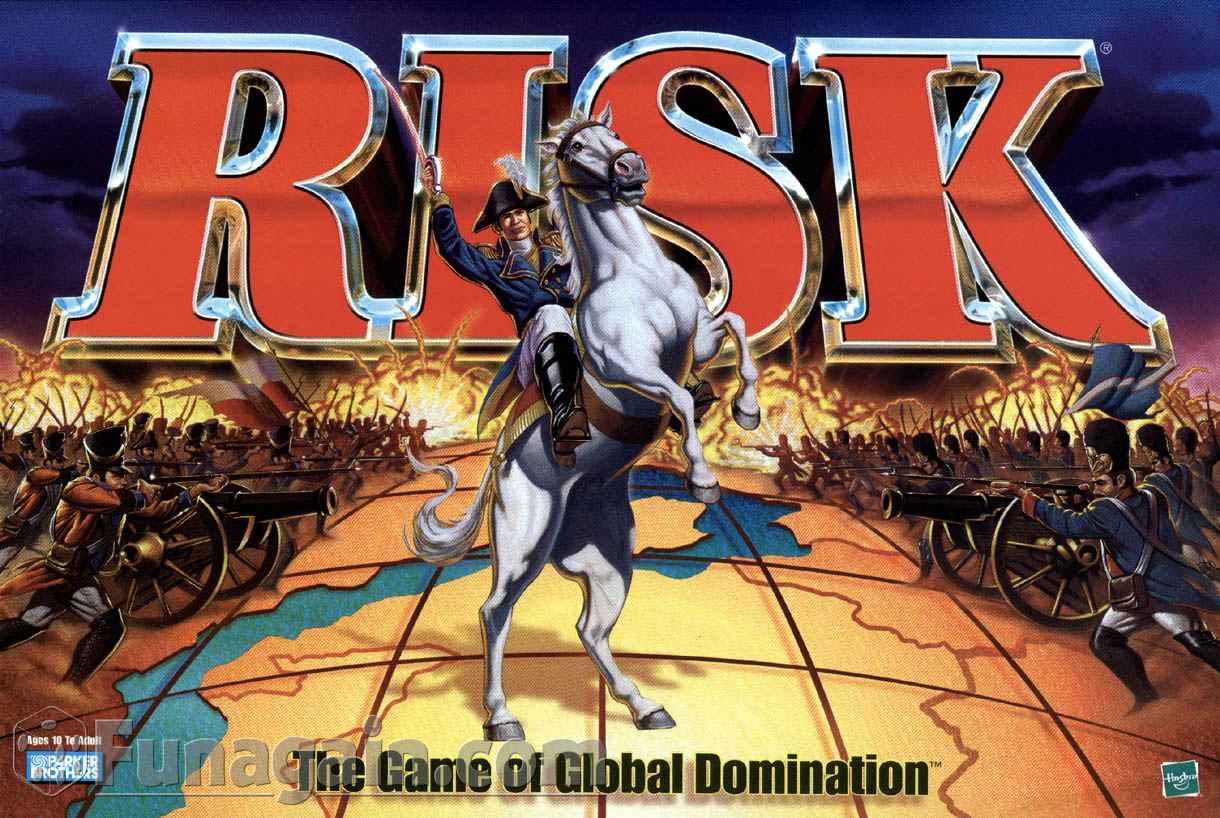


Ideally, students will play with more caution when they keep the probability in their mind. Ask them to notice if their tactics change, what seems to work for them, and what they’re keeping in mind as they play. Once probability has been introduced and students have been asked to calculate it, have them reform their groups and play the game of SKUNK once again. Add challenges to these activities if students or more advanced or find ways to break down the concepts and demonstrate the basics for students who are new to the topic. Give students a couple board problems or a worksheet that allows them to develop this skill. Rolling a high number like two sixes, is equally unlikely. For instance, rolling two 1s will be a 1 in 36 chance.
#Risk probability game movie#
You could examine the probability of winning the lottery, the probability of being struck by lightening, or the probability of Kevin Bacon being in a movie (just to name a few examples).Īfter you’ve discussed it, have students calculate the probability of rolling any given combination of numbers.

Allow students to come up with their own examples and bring in some real-life scenarios for them to calculate. But what about flipping heads twice in a row? This is a 1 in 4 possibility. There is 1 possibility of getting heads over 2 total possibilities. Was the winning person just lucky? What strategies did they use? Try to lead the class into making the observation that the probability of rolling a single one is about 1 in 6, and the probability of rolling two 1s is less.Įxplain the concept of probability: the number of times a desired (or undesired) possibility can happen, over the total number of possibilities. Then, as a class, discuss what they noticed about how the game worked. Teach students the rules and let them play one game. You can incorporate a lesson on chance and probability into the game. As the game progresses, they will realize that it’s in their best interest to “quit while they’re ahead” and they’ll focus on maximizing points while minimizing risk. In that case the player’s turn is ended and he or she loses ALL their points from ALL the rounds played so far.ĭepending on the age or math level of the students, they may start by rolling as many times as they can. When this happens he or she loses all their points for that round (S,K,U,N, or K) and must pass the dice on to the next playerĥ. He or she rolls 1s on both dice. A student’s turn continues indefinitely until he chooses to pass the dice on OR:Ĥ. He or she rolls a single 1. That student can then choose to complete his turn and pass on the dice to the next player OR he can choose to keep rolling and adding more points. Each student gets one turn during round S, one turn during round K, one round during round U, etc.ģ. A student rolls the dice and records the number they get in the column that corresponds to the round. Each letter denotes a round of the game.Ģ. Students determine who goes first, second, third, etc. Students should hold their paper horizontally and separate it into five columns, each one topped with letters: S,K,U,N,K.

Students separated into groups (3-4 is an ideal number to make the game interesting, but prevent student boredom when it isn’t their turn)ġ. The SKUNK worksheet or card can be prepared beforehand or created by students at their seats.On top of the intrinsic reward of winning, and the excitement of chance, SKUNK is an incredibly low-prep game that requires no more than paper and dice! Teaching the Game of SKUNK: SKUNK is a classroom classic – it involves risk, reward, and math that teaches concepts like probability and chance.


 0 kommentar(er)
0 kommentar(er)
